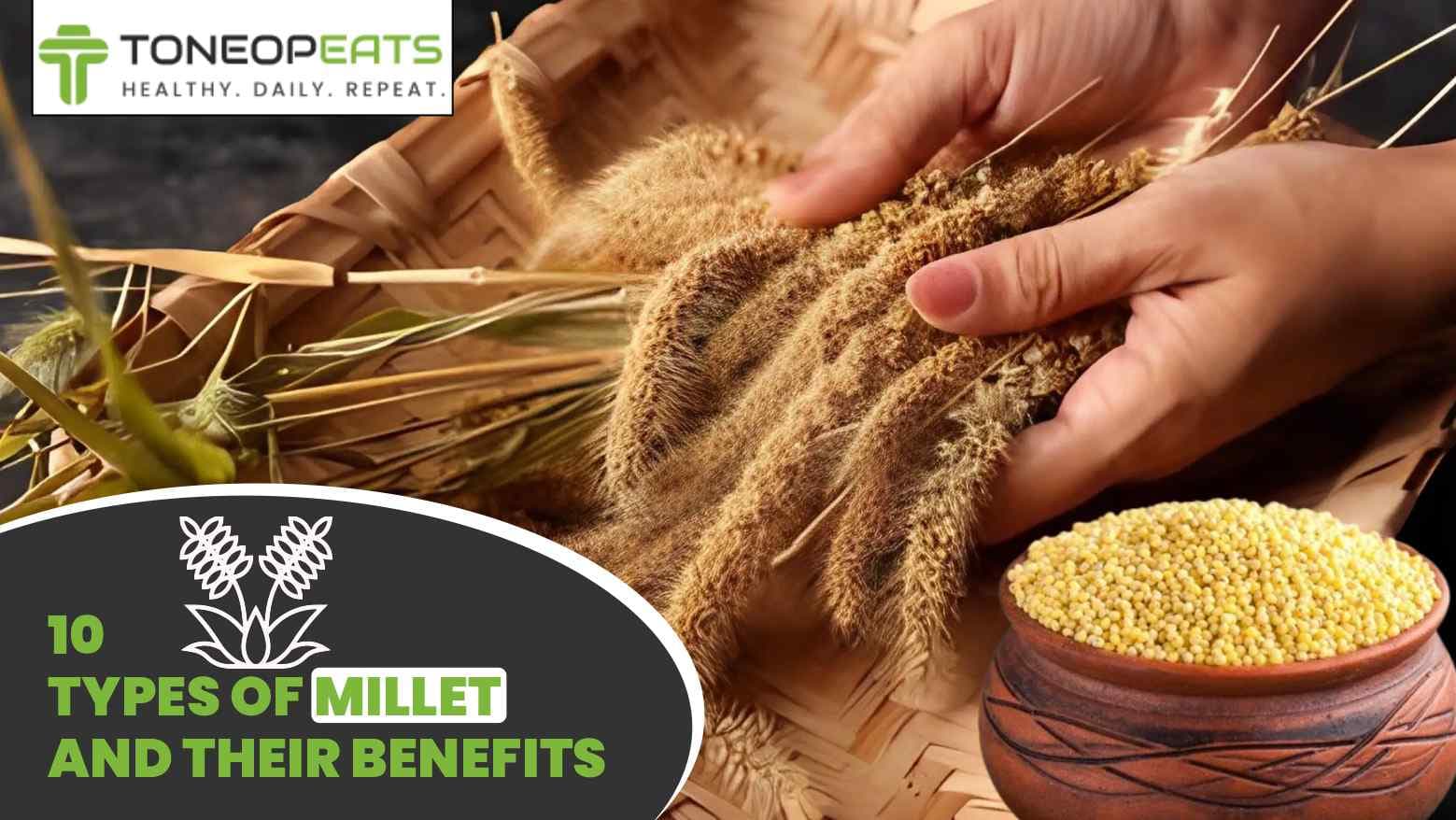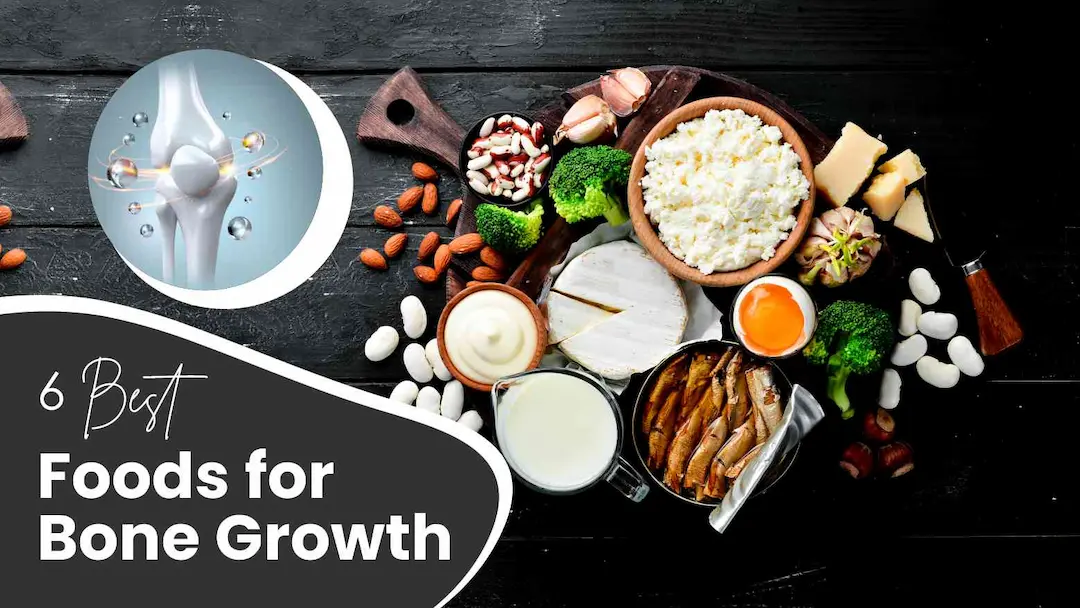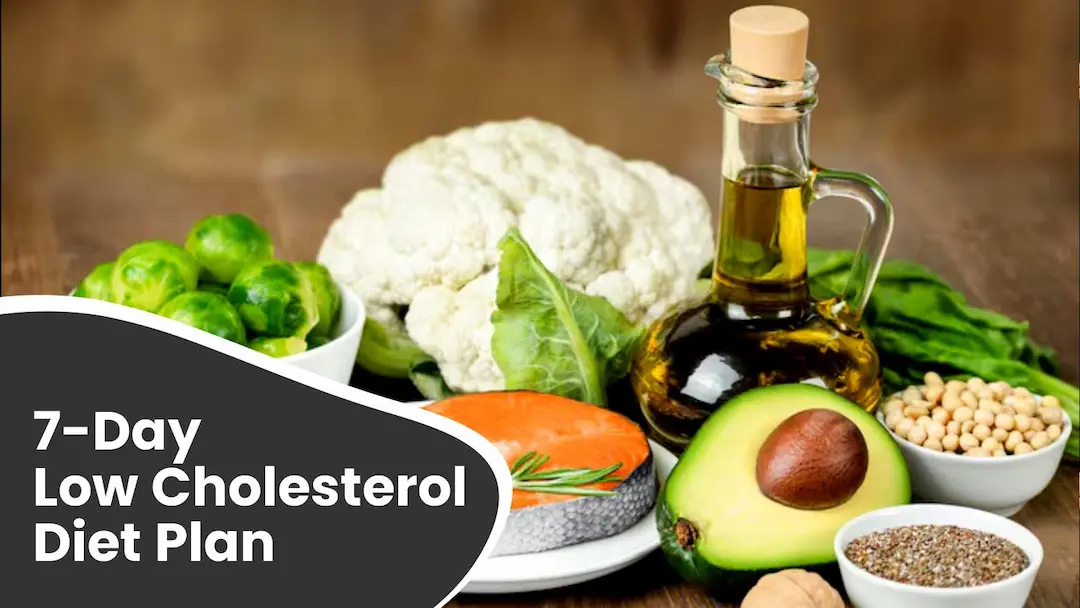Eating healthy can seem like a task when junk food is more accessible and often cheaper than its healthy alternatives. However, as we all know, long-term consumption of junk food is incredibly harmful to our health. So, how do we get on the road to health and replace our unhealthy eating habits with healthier options?
In today's feel-good and self-improvement era, more and more people around the world are talking about and consuming healthy foods like millet and its beneficial properties. Millet is a small, gluten-free grain available in different types, each with its own health benefits. These little grains are like health superheroes, boosting your health, keeping you strong, and helping you lose weight without any gluten.
Eating millet as part of your daily diet is not a new concept. In fact, people in central and southern India have been consuming these grains almost regularly as a staple food for thousands of years.
Let's explore the best types of millet so you can make a healthy change!
Table Of Contents
- What Are Millets?
- 10 Different Types Of Millet — A Dive Into Our Traditional Food
- 5 Astonishing Health Benefits Of Millets
- Dietitian's Recommendation
- The Final Say
- FAQs
- References
What Are Millets?
Millets are small-seeded grasses that have been cultivated for thousands of years in different parts of the world. This small, round whole grain is mainly grown in Asia and Africa, especially India and Nigeria. India is the world's largest producer of millet, with a share of 38.40% in world production. Millets are highly nutritious and versatile, making them an essential part of many traditional diets.
As an excellent source of essential nutrients for millions of Indians, they are also called 'nutritious cereals'. Indian millet is nutritionally superior to wheat and rice as it is rich in protein, vitamins and minerals. They are also gluten-free and have a low glycemic index, making them ideal for people with celiac disease or diabetes. Sorghum (jowar), finger millet (ragi), pearl millet (bajra), Barnyard millet, Millet millet, Kodo millet, Buckwheat, Amaranthus and Foxtail millet are most common types of millet.
Also Read: Millet For Weight Loss: Recipes, Benefits, Dietary Tips, And More!
10 Different Types Of Millet — A Dive Into Our Traditional Foods
Let us learn about the 10 healthiest and most popular types of millets and how to use them.
1. Sorghum Millet (Jowar)
Commonly known as jowar in India, sorghum is often used to bake cakes and pies, make syrup, or grind flour. It is largely grown in India, especially Maharashtra and Karnataka, but can also be found in the fields of Central America, South Asia, and Africa. The grain is used for human food, and the remaining plant is either fed to animals or used for ethanol production. Jowar, or sorghum, is one of the most important cereals in the world and is perfect for low-calorie dinner ideas.
Nutritional Value per 100g of Sorghum Millet | |
| Energy (kcal) | 349 |
| Protein | 10.4g |
| Carbohydrates | 72.6g |
| Fibre | 1.2g |
2. Pearl Millet (Baajra)
Pearl millet, or baajra in India, is a grain that has been cultivated in Asia and Africa since prehistoric times. It can still be found in the Sahel region of Africa, where it is believed to have been domesticated.
In India, baajra is used to make bhakri (a type of flat bread/roti) or cooked to make a Tamil porridge called kamban choru. It is usually ground into flour to make pancakes, which can be found in many iterations around the world. In Namibia, South Africa, it is sometimes fermented into a drink called "ontaku" or "oshikundu".
Nutritional Value per 100g of Pearl Millet | |
| Energy (kcal) | 361 |
| Protein | 11.6g |
| Carbohydrates | 65.5g |
| Fibre | 1.2g |
3. Foxtail Millet (Kangni)
Foxtail millet, called kangni in India, is the second most cultivated variety of millet and is widely grown in Asia. This millet has a high content of vitamins A and E, phosphorus and potassium and is rich in fibre. It is commonly used in baking custards and cakes, and in South India, it is used to make lemon rice, which is also used in the fox-millet kheer dessert.
Nutritional Value per 100g of Foxtail Millet | |
| Energy (kcal) | 331 |
| Protein | 12.3g |
| Carbohydrates | 60.9g |
| Fibre | 14mg |
4. Finger Millet (Ragi)
Ragi, or finger millet, is a very hardy crop grown in India and Africa, where it thrives in arid and semi-arid regions. In Nepal, ragi flour is fermented to make beer and the stems are used as fodder. In India, it is malted and ground into flour, which is mixed with milk, boiled water, or yoghurt for consumption, and is also used to make flatbreads, including thin, leavened dosa and thicker, unleavened roti. You can use finger millet to make amazing healthy breakfasts for weight loss, such as millet dosa.
Nutritional Value per 100g of Finger Millet | |
| Energy (kcal) | 328 |
| Protein | 7.3g |
| Carbohydrates | 72g |
| Fibre | 2.6g |
5. Fonio Millet (Acha)
Fonio, locally known as findi or acha, is an ancient grain grown in North and West Africa. It is drought and disease-resistant and can be grown in poor and rocky soil. Fonio is highly nutritious, but it can be difficult to process. Therefore, it is an underutilised cereal crop.
However, efforts are underway to promote its use worldwide. Like other millets, it can be used as flour for bread, rolls and cakes, but it is also served as couscous.
Nutritional Value per 100g of Fonio Millet | |
| Energy (kcal) | 358 |
| Protein | 7.1g |
| Carbohydrates | 74.4g |
| Fibre | 3.4g |
6. Brown Top Millet (Korle)
Brown millet is traditionally grown in India, where it has several local names like Korle, Markra, Kula Samai, Choti Kangni, etc. Brown millet was primarily used to make sweet desserts, but today they are used to make cereals, snack bars, porridge, dosa, roti, etc. Additionally, its plant is also used as fodder or to control soil erosion. This millet is another superfood that is rich in protein, healthy fats, carbohydrates and fibre.
Nutritional Value per 100g of Brown Top Millet | |
| Energy (kcal) | 338 |
| Protein | 8.8g |
| Carbohydrates | 72.3g |
| Fibre | 8.2g |
Also Read: Healthy Eating Is Not Boring Anymore! Learn About The 10 Healthy Dinner Recipes To Lose Weight
7. Little Millet (Kutki)
Little millet thrives in the mild climate of South Asia, the Caucasus, China and India. Kutki is a traditional crop that has been growing in India since 2700 BC. It is particularly suitable for growing in areas with low rainfall. In India, it is often cooked like couscous and served in upma mixed with vegetables. Other dishes made from kutki are phirni, dalia, laddu, dosa, halwa, etc.
Nutritional Value per 100g of Little Millet | |
| Energy (kcal) | 314 |
| Protein | 10.13g |
| Carbohydrates | 65.5g |
| Fibre | 7.7g |
Also Read: Nutritional Value Of Upma Per 100g With Recipe To Get Maximum Benefits!
8. Buckwheat Millet (Kuttu)
Buckwheat is one of the best-known and most-used millet grains. It is called a pseudocereal and doesn't grow on grasses like the other names on this list. Russia and China are the biggest producers of this seed. In India, it is grown in the hilly areas of Jammu and Kashmir, Uttarakhand, Himachal Pradesh, Chattisgarh, and Uttar Pradesh.
In India, kuttu is used to make pancakes, rotis, dosas, and pakoras. Italians use it to make pizzoccheri, a type of whole-wheat pasta. The plant also produces honey, which is less sweet than regular honey.
Nutritional Value per 100g of Buckwheat Millet | |
| Energy (kcal) | 343 |
| Protein | 13.3g |
| Carbohydrates | 71.5g |
| Fibre | 10g |
9. Amaranth Millet (Rajgira)
Amaranth is another pseudocereal on this list, and it is native to Mexico, Guatemala, Peru, and Bolivia. It was once a staple food of the Aztecs. Indians use it as a grain substitute, which is permissible to eat during the Hindu fasts of Navratri and Shravan.
It is rich in protein, fibre, pantothenic acid, B vitamins, iron, phosphorus, zinc, magnesium and manganese, and it's gluten-free and easy to cook. It can be cooked like rice, ground into gluten-free flour for various purposes, popped like popcorn or made into a nutritious porridge.
Nutritional Value per 100g of Amaranth Millet | |
| Energy (kcal) | 371 |
| Protein | 14g |
| Carbohydrates | 65g |
| Fibre | 7g |
10. Kodo Millet (Kodo Dhana)
Kodo millet is native to West Africa, but today it is also grown in Nepal, India, the Philippines, Indonesia and Vietnam. In India, it is often cooked as pilau or pilaf, which replaces rice. It can also be made into payasam or kheer, a type of wet pudding.
As a versatile millet, they can be ground into flour and used to prepare many dishes such as idli, dosa, pongal, khichdi, snacks, porridge, crackers and noodles.
Nutritional Value per 100g of Kodo Millet | |
| Energy (kcal) | 302 |
| Protein | 8.03g |
| Carbohydrates | 69.9g |
| Fibre | 8.5g |
Also Read: Which Salt Is Better For Health? Here Are 4 Types And Detailed Insights To Help You Choose
5 Astonishing Health Benefits Of Millets

Millet offers many benefits to the human body, which is how our ancestors survived and thrived without modern supplements! Let's discuss a few of them.
1. Contributes To Digestive Health
Millet is one of the best foods for good gut health and is like a super grain for your belly. They have fibre that keeps things moving and stops those tummy troubles. Plus, they have prebiotics that improve digestion, metabolism, bone health and more! This can improve gut health and immunity. You can also take ToneOp Care’s Digest 360 tablets to restore your gut health and prevent stomach-related problems like acidity, heartburn and bloating.
2. Great For People With Gluten Intolerance
Millet is good for people with gluten intolerance! They're like the cool kids in town, completely gluten-free, so no tummy troubles for those who can't stomach it. Millet can be found in all those delicious gluten-free treats like bread and cookies that make life more wonderful for everyone!
3. Supports Heart Health
Millets are a treasure chest of nutrition loaded with magnesium, a luxurious mineral that will absolutely warm your heart. It can help lower blood pressure, keep blood flowing smoothly, and provide a cooling atmosphere for blood vessels. In addition, they also contain adiponectin, a type of protein and hormone that regulates glucose levels and decreases inflammation.
Also Read: 10 Best Foods For High Blood Pressure: Your Guide to Healthy Choices and Foods to Avoid
4. Improves Mood
Millets are full of tryptophan, an amino acid that the body uses to produce more serotonin. Think of tryptophan as serotonin's coach, who pushes our mood manager to work harder and be more present for us. For anyone feeling a little down or anxious, chewing millet can be just the mood booster you need!
5. Controls weight
Low in calories but high in fibre and protein, millets will keep you feeling full for ages and stop those annoying stomach rumblings. Plus, they're all about balancing sugar levels, so expect no crazy highs and lows that make you overeat. If you want to shed a few kilos or stay fit, millet is the sneaky friend you need.
Also Read: Delicious And Nutritious: Healthy Meal Ideas For Effective Weight Loss
Dietitian's Recommendation
Millet is an excellent source of vitamins, minerals and fibre and is full of important elements. With the right combination of millet in your diet, you can make enjoyable and healthy meals. From pearl millet to foxtail millet, each type of millet comes with its own unique set of benefits and nutritional values. If you want to include more healthy grains in your daily meals, consider adding high-quality millet for an extra nutritional boost!
Dt. Lavina Chauhan
The Final Say
And there you have it, folks! 10 different types of millets and their benefits—each unique as their distinctive variety. So, next time you're looking for a healthy and delicious grain to add to your diet, be sure to consider one of these amazing millets. Your taste buds and your body will thank you!
FAQs
1. What are the different kinds of millets?
Most common types of millets are Sorghum Millet (Jowar), Finger millet (Ragi), Proso Millet (Chena / Barri), Pearl Millet (Baajra), Foxtail Millet (Kakum / Kangni), Browntop Millet (Korle), Barnyard Millet (Sanwa), Little Millet (Moraiyo), and Kodo millet.
2. What type of millet is the healthiest?
Sorghum (Jowar), Pearl millet (Baajra), Foxtail millet (Kangni), Finger millet (Ragi), Barnyard millet, Kodo millet, Little Millet and Proso Millet are among the healthiest millet grains available.
3. Which millets are best for weight loss?
Foxtail Millet is a nutritional powerhouse and an excellent source of protein, iron, and calcium. These nutrients are great for maintaining blood sugar and overall gut health, making it ideal for weight loss and diabetes control.
4. Which millet is high in protein?
Proso Millet (Chena or Barri) and Pearl Millet (Baajra) are among the millets with the highest amount of protein, ranging from 12.5%-19.8%.
References
- https://www.finedininglovers.com/article/types-millet-how-use
- https://prakati.in/millets-the-superfood-of-india-what-types/
- https://www.smartfood.org/project/what-are-millets-types-benefits-and-recipes/
- https://apeda.gov.in/apedawebsite/SubHead_Products/Indian_Millets.htm
- https://ayushdhara.in/index.php/ayushdhara/article/view/1317
- https://yummy-valley.com/types-of-millet/?srsltid=AfmBOoph70vN55qhjt9Y13gWtal112SgOKqM-ZDGCE4nqHtxScCZTePr
About ToneOp Eats
ToneOp Eats is your go-to health kitchen, delivering nourishing meals in Bhopal, Indore & Bangalore. The meals are prepared with strategically planned nutrition and portions for your health goal. With just three simple steps, you can subscribe to a meal plan for weight loss, muscle gain, or balanced diet goals. Experience the perfect blend of taste and wellness in our nutrient-dense and calorie-counted range of meals, including protein-rich grills and meal bowls, full of fibre salads & smoothies, workout-friendly protein 30,40,50 meals and refreshing juices.



































